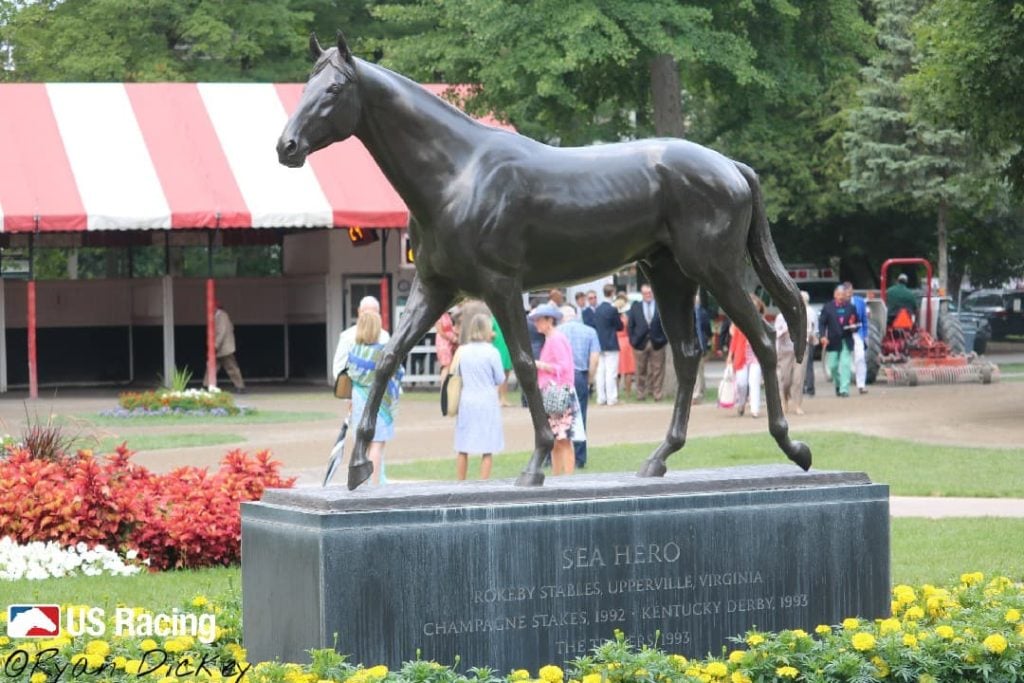There has never been a “walkover” or a race with a single participant in Belmont Stakes history. There have been five two-horse fields (1887, 1888, 1892, 1910, 1920). Unlike the Kentucky Derby, where it’s a challenge to limit participation to just 20, the Belmont Stakes rarely has a full field. The largest field was 15 in 1983 when Caveat defeated Slew o’ Gold, and the second-largest fields were 14 in 1875 when Calvin beat Derby winner Aristides, 1996 when Editor’s Note won, and in 2013 when Palace Malice emerged victorious.
The inside post position has been the most successful overall, having produced 24 winners. Posts three has produced 16 winners and five is represented by 15 winners, while the number seven slot is represented by 13 winners. Post position 12 and post 10 have produced just a single winner. Only one horse has won from outside post position 12 (the 13).


The weather forecast for Saturday in New York calls for probable rain showers, a solid chance for rain, and an off-track. Of the 156 previous runnings of the Belmont, 38 (23.71%) have been run on a track that was labeled as “off”, the most recent being 2011 when Ruler On Ice won on a track labeled “sloppy/sealed.”
Ruler On Ice became the second gelding to win the Belmont Stakes when he won in 2011. In 1985, Creme Fraiche became the first to do so. Geldings were allowed to compete in the race from its inaugural running in 1867 to 1918 and even received a three-pound weight allowance. After 1918, geldings were banned from running in the race until 1957. New York-bred Funny Cide won the Kentucky Derby and Preakness Stakes but failed to win the Triple Crown when he finished third behind Empire Maker in 2003.
The first ever post parade in North America took place in the fourth running of the Belmont Stakes in 1871 and is now a staple at every racetrack around the country.
Since the introduction of pari-mutuel wagering in New York in 1940, there has been no show wagering on the Belmont Stakes six times, most recently in 1978 when Triple Crown winner Affirmed met Alydar after finishing first and second in the first two legs. There was also no show wagering in 1973 when Secretariat won. Show betting was also eliminated in 1957 when Gallant Man and Bold Ruler faced off, the former romping to an eight-length win under jockey Bill Shoemaker. The 1953 Belmont won by Native Dancer was also without show wagering, and the 1943 Belmont won by Count Fleet, which also crowned him a Triple Crown champion, didn’t offer place or show wagering. And when Whirlaway completed his sweep of the Triple Crown in the 1941 Belmont, there was also no show betting.


The writing team at US Racing is comprised of both full-time and part-time contributors with expertise in various aspects of the Sport of Kings.























